Are you tired of dealing with a rotting and decaying fence? It can be a frustrating problem that not only affects the overall appearance of your property, but also compromises the security and privacy it provides. But don’t worry, I’m here to help you protect your fence and keep it in pristine condition. In this article, you’ll learn some effective tips and tricks for preventing rot and decay, so you can enjoy a sturdy and long-lasting fence for years to come.
When it comes to protecting your fence from rot and decay, there are several key factors to consider. First and foremost, choosing the right type of wood or material for your fence is crucial. Some woods, like cedar or redwood, naturally have properties that make them more resistant to rot. Additionally, treating the wood with a protective sealant or stain can provide an extra layer of defense against moisture and fungi. Regular maintenance, such as inspecting for signs of decay and promptly repairing any damage, is also essential. In this article, I’ll delve into these topics in more detail and provide you with practical advice to ensure your fence stays strong and durable. So, keep reading to learn everything you need to know about protecting your fence from rot and decay.
How to Protect Your Fence from Rot and Decay
Whether you have a wooden, vinyl, metal, or chain link fence, it is essential to take proper care to prevent rot and decay. Your fence is not only a functional and aesthetic addition to your property but also a significant investment. By following simple maintenance tips and using suitable materials, you can ensure the longevity and durability of your fence.
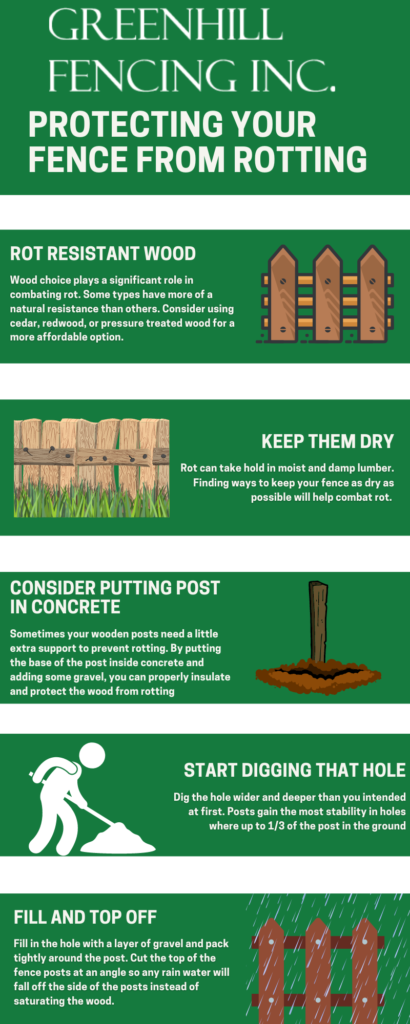
Types of Fence Materials
Before we delve into the prevention and maintenance tips, let’s briefly explore the different types of fence materials available:
Wood Fence
Wood fences are a popular choice due to their natural beauty and versatility. However, they are more susceptible to rot and decay if not properly maintained.
Vinyl Fence
Vinyl fences are known for their durability and low maintenance needs. They are resistant to rot and decay, making them an ideal option for those looking for a long-lasting fence.
Metal Fence
Metal fences, such as iron or aluminum, provide strength and security. While metal fences are not prone to rot, they can still be affected by other forms of decay, such as rust.
Chain Link Fence
Chain link fences are primarily used for security purposes. Although they are less prone to rot, they can still be affected by rust and other forms of decay.
Common Causes of Fence Rot and Decay
Understanding the causes of fence rot and decay is crucial in implementing preventive measures. Here are some common culprits:
Moisture and Water Exposure
Excessive moisture and prolonged water exposure can weaken the structure of your fence and lead to rot or decay. This can occur due to heavy rain, high humidity, or insufficient drainage.
Inadequate Maintenance
Neglecting to regularly clean, inspect, and maintain your fence can accelerate its deterioration. Proper upkeep, including painting or staining, is essential for preventing rot.
Insect Infestation
Wooden fences are particularly vulnerable to insect infestation, especially from termites and carpenter ants. These pests can cause significant damage to the structure of your fence if left untreated.
Fungal Growth
Fungal growth, such as mold and mildew, thrives in damp environments. When left unchecked, mold can lead to decay and compromise the structural integrity of your fence.
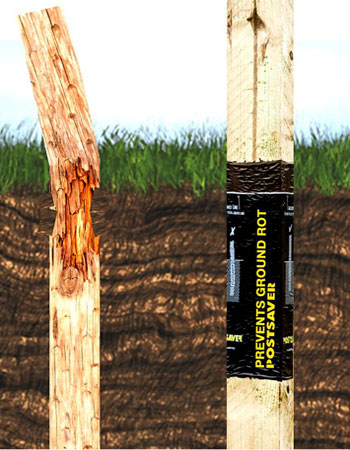
Signs of Fence Rot and Decay
To prevent further damage, it is crucial to recognize the early signs of fence rot and decay. Keep an eye out for the following indicators:
Discoloration
If you notice any unusual discoloration on your fence, such as dark spots or patches, it could be a sign of rot or fungal growth.
Soft or Weak Areas
Gently press on the surface of your fence. If you encounter soft or weak spots, it suggests that the wood or material has started to deteriorate.
Loose or Damaged Boards
Inspect your fence for any loose or damaged boards. This could indicate decay or structural weakness, which may compromise the overall integrity of your fence.
Mold and Mildew
The presence of mold or mildew on your fence is a clear sign of excess moisture or inadequate ventilation. These growths should be addressed promptly to prevent further decay.
Prevention and Maintenance Tips
Taking proactive measures to protect your fence from rot and decay is key to preserving its lifespan. Here are some effective prevention and maintenance tips:
Regular Cleaning and Inspection
Clean your fence regularly to remove dirt, debris, and potential mold growth. Inspect for any signs of damage or rot and address them immediately.
Applying Waterproof Sealants
Applying a waterproof sealant to your wooden fence creates a protective barrier against water damage and helps prevent rot and decay.
Repairing or Replacing Damaged Boards
Promptly repair or replace any loose, damaged, or rotted boards to maintain the structural integrity of your fence.
Proper Drainage and Ventilation
Ensure your fence has proper drainage and ventilation to minimize moisture buildup. Avoid placing soil or decorative elements directly against the fence, as they can trap moisture.
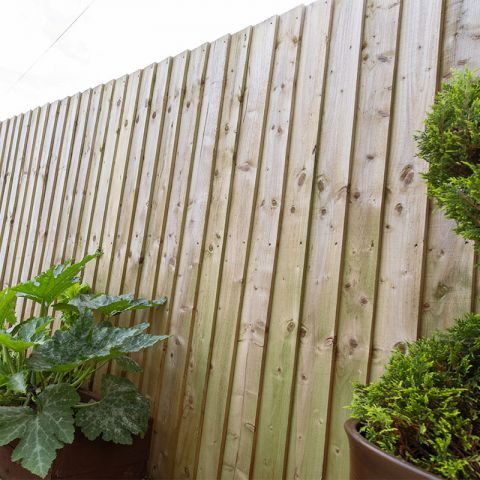
Choosing the Right Fence Location
Selecting the appropriate location for your fence can significantly impact its durability. Consider the following factors:
Consider Sun Exposure
Choose a location with adequate sun exposure to prevent excessive moisture buildup and promote faster drying of your fence.
Avoid Moisture Retention Areas
Avoid placing your fence in areas where excessive moisture tends to accumulate, such as low-lying spots or areas prone to flooding.
Evaluate Soil Conditions
Assess the soil conditions to ensure proper drainage. Avoid areas with compacted soil or clay, as they tend to retain water.
Maintain Adequate Distance from Trees
Leave sufficient space between your fence and nearby trees to prevent issues caused by roots, such as moisture retention and physical damage.
Effective Drainage Techniques
Implementing proper drainage techniques can significantly reduce the risk of rot and decay. Consider the following methods:
Installing French Drains
French drains help redirect excess water away from your fence, preventing water buildup and potential damage.
Creating Slopes and Grading
Ensure that the ground around your fence is appropriately graded to promote natural water runoff and prevent standing water.
Using Permeable Materials
Consider using permeable materials, such as gravel or crushed stone, in areas near your fence to facilitate proper water drainage.
Adding Drainage Trenches
Incorporating drainage trenches around your fence can help divert water and protect the structure from excess moisture.
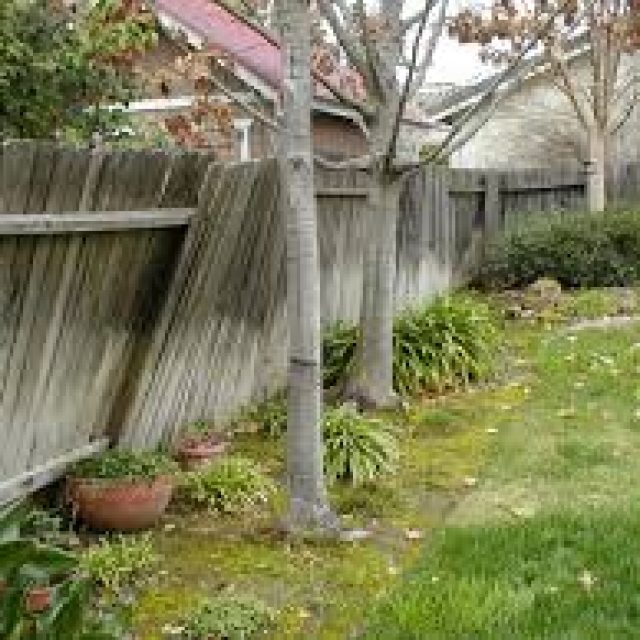
Rot-Resistant Fence Materials
Choosing rot-resistant materials is a proactive step in preventing fence decay. Here are some options to consider:
Cedar Fence
Cedar is naturally resistant to rot and decay. Its natural oils act as a protective barrier, making it a popular choice for wooden fences.
Redwood Fence
Redwood is another highly durable and rot-resistant choice for wooden fences. Its natural resilience helps combat decay caused by moisture.
Composite Fence
Composite materials, such as recycled plastics and wood fibers, offer excellent durability and resistance to rot, insects, and fungal growth.
Pressure-Treated Wood Fence
Pressure-treated wood undergoes a preservation process that enhances its resistance to rot, decay, and insect infestation.
Repairing and Restoring a Rotting Fence
If your fence has already succumbed to rot and decay, there are steps you can take to repair and restore it:
Identifying Structural Damage
Thoroughly inspect your fence for any signs of structural damage. Determine the extent of the decay and plan your repairs accordingly.
Replacing Rotted Boards
Remove and replace any rotted fence boards, ensuring a secure and stable surface.
Reinforcing Weak Areas
Reinforce weak areas with additional support, such as brackets or braces, to restore the structural integrity of your fence.
Applying Preservatives and Stains
After making necessary repairs, apply preservatives and stains to protect your fence from future decay and enhance its appearance.
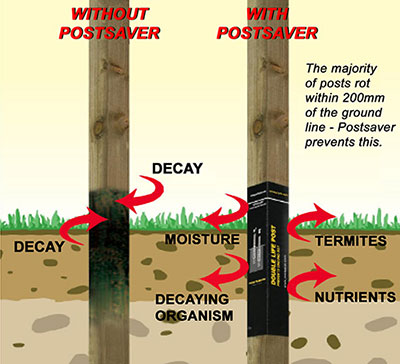
Natural Ways to Prevent Fence Decay
If you prefer natural methods to prevent fence decay, consider the following options:
Applying Vinegar or Baking Soda Solutions
Spraying a mixture of vinegar or baking soda on your fence can help inhibit the growth of mold and mildew.
Using Essential Oils as Repellents
Certain essential oils, such as tea tree oil or eucalyptus oil, possess natural antifungal and insect-repelling properties. Dilute them with water and spray them on your fence as a natural deterrent.
Utilizing Natural Fungicides
Biofungicides, made from naturally-occurring organisms, can be an effective and environmentally-friendly way to combat fungal growth on your fence.
Maintaining Proper Air Circulation
Promote adequate air circulation around your fence by trimming vegetation or using lattice panels. This will help prevent the buildup of moisture and the growth of fungi.
Professional Fence Restoration Services
In some cases, it may be necessary to seek professional help to restore your fence. Professional fence restoration services can offer the following solutions:
Pressure Washing and Cleaning
Professional pressure washing and cleaning can effectively remove dirt, grime, and traces of decay from your fence.
Sandblasting and Refinishing
If your fence requires extensive restoration, sandblasting and refinishing can restore its original appearance and durability.
Wood Rot Repair and Replacement
Experienced professionals can accurately identify and repair areas affected by wood rot, replacing damaged sections as necessary.
Stain and Paint Application
Professional fence restoration services can apply protective stains or paints to enhance the appearance and longevity of your fence.
Choosing the Right Fence Design
Your fence design not only contributes to the aesthetic appeal of your property but also affects its functionality. Consider the following options:
Privacy Fence
If privacy is a top priority, opt for a tall and solid fence design to create a secluded environment.
Decorative Fence
Decorative fences can add beauty and visual interest to your property. Choose intricate designs and ornamental elements that complement your landscape.
Picket Fence
Picket fences are classic and timeless, providing a charming and welcoming boundary for your property.
Farm Fence
For agricultural purposes or a rustic aesthetic, farm fences with wire mesh or wooden rails are a practical and visually appealing choice.
Protecting Fence Posts from Rot
The posts of your fence play a crucial role in maintaining its stability and integrity. Here are some methods to protect them from rot:
Using Concrete Footings
Installing fence posts with concrete footings provides a solid foundation and helps prevent moisture from seeping into the wood.
Applying Post Caps
Adding post caps to the top of your fence posts creates a protective barrier against water infiltration, thus reducing the risk of decay.
Wrapping with Plastic Sleeves
Wrapping fence posts with plastic sleeves or barriers can provide an extra layer of protection against soil contact and moisture retention.
Avoiding Soil Contact
Avoid direct contact between the soil and the bottom of your fence posts by using concrete or gravel bases. This helps prevent moisture absorption and subsequent rotting.
Best Practices for Fence Installation
Proper installation is paramount to ensure the longevity and stability of your fence. Consider the following best practices:
Properly Digging Fence Post Holes
Dig each fence post hole to the appropriate depth and diameter to provide a solid foundation for your fence.
Leveling and Plumbness
Ensure that your fence is level and plumb during installation to maintain its structural integrity and aesthetic appeal.
Securely Fastening Boards
Use appropriate fasteners, such as screws or nails, to securely attach fence boards. This prevents loose boards and potential damage due to wind or other forces.
Following Manufacturer Guidelines
Always follow the manufacturer’s guidelines and instructions for installing your fence materials. This ensures proper installation and reduces the likelihood of future issues.
Conclusion
Protecting your fence from rot and decay is essential to preserve its lifespan and maintain its functionality and appearance. By understanding the common causes of fence decay, recognizing the signs, and implementing preventive measures, you can ensure that your fence stands the test of time. Whether through routine maintenance, proper installation, or utilizing rot-resistant materials, taking care of your fence will pay off in the long run. So, invest the time and effort into protecting your fence, and it will continue to serve its purpose for years to come.
For more information on fence care, maintenance, and other related topics, visit our website FenceDude.org and explore our comprehensive blog content. We aim to provide you with reliable information and answer the many questions you may have about fences, ensuring you make informed decisions about your fence care and maintenance.